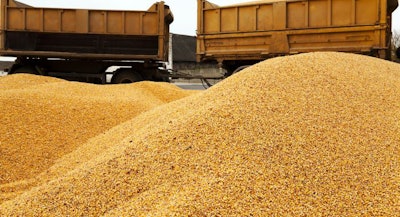
Conservative projections by USDA dampen enthusiasm for future corn prices
Corn prices saw a slight decrease, and soybeans soon followed, after a predictable but conservative series of market projections by the U.S. Department of Agriculture (USDA).
Corn prices declined by a few cents beginning February 9, and soybeans followed on February 10 after briefly ticking above $14 per bushel again, according to James Mintert, director of the Center for Commercial Agriculture at Purdue University. This may seem to conflict with Tuesday’s projections from the USDA, which forecast increased prices for both agricultural commodities on account of rising demand pressure from China, but Mintert explained that the price cuts were likely caused by disappointment among traders who had expected more aggressive estimates from USDA.
“Ending stocks are down 50 million bushels,” Mintert told attendees of a Purdue market outlook webinar. “However, if you compare that to surveys of analysts around the nation, that was at the very high end of ending stock estimates. Industry was disappointed, which was reflected in the weak futures response.”
Market signals continue to suggest a stronger international market for U.S. corn than USDA is projecting, Mintert said. In its effort to recover from African swine fever, China has reinvented its pork production, switching over to an industrialized model that requires more corn. Where China was not previously a large importer of corn, Mintert said U.S. exports to China are up 80% compared to last year, and China alone accounts for 70% of the increase. Some analysts, Mintert said, project that China could import 1 billion bushels of U.S. corn by season’s end.
But the USDA report, which projected Chinese imports at just 900 million bushels this season, has created uncertainty about those rosy visions of China’s recovery, Mintert continued, and there is also growing concern about ethanol production, which so far is trending lower this year than last.
Soybeans ended up in a similar boat, with the USDA projecting increased demand and cutting estimates of U.S. and global soybean stocks this fall. Mac Marshall, vice president of market intelligence for the U.S. Soybean Board, estimated that the 120 million bushels that the USDA predicts will remain unsold at the end of the 2020-21 season is equivalent to less than 10 days’ supply, suggesting very tight markets.
However, this conclusion did not come as a surprise.
“The prevailing market view was that USDA would cut ending stocks for the U.S., and that happened,” Marshall said.
While the USDA reports may have yielded little in the way of new information about global conditions, they also come at a critical time: the U.S. agency will begin surveying farmers about their planting plans this month.
Right now, Purdue agriculture economist Michael Langemeier said the calculus favors planting soybeans over corn — but just slightly. The thin margin could force hard decisions and prompt some farmers to opt for a 50-50 mix to cover their bases, potentially increasing the acreage planted with soybeans and decreasing corn acreage, he said.
“It’s going to be an interesting spring,” Mintert concurred.











